Bisley Farm School and Shaftesbury School, Bisley, Surrey
In 1867, The National Refuges for Homeless and Destitute Children (later known as the Shaftesbury Homes), began to look for accommodation in the countryside, to which boys could be moved from its London homes. In 1867, a farm for sale was found at Bisley, near Woking in Surrey, and fund-raising began to purchase the property and erect the required premises. The site, which became the Farm School and Country Home, came into operation in 1868.
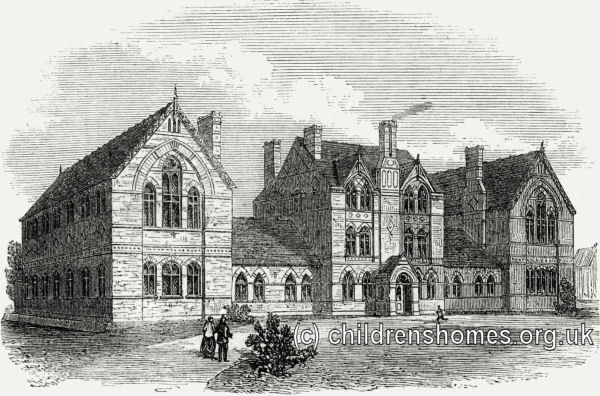
Bisley Farm School for Boys. © Peter Higginbotham
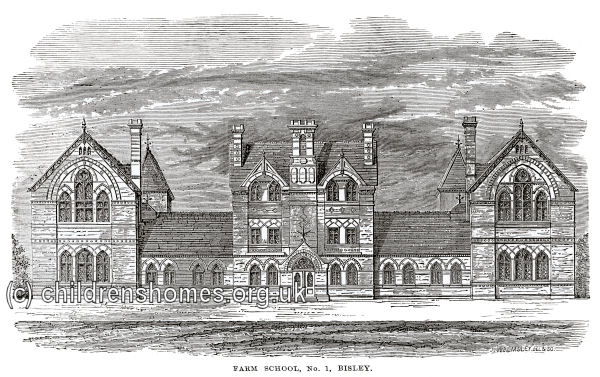
Bisley Farm School for Boys. © Peter Higginbotham
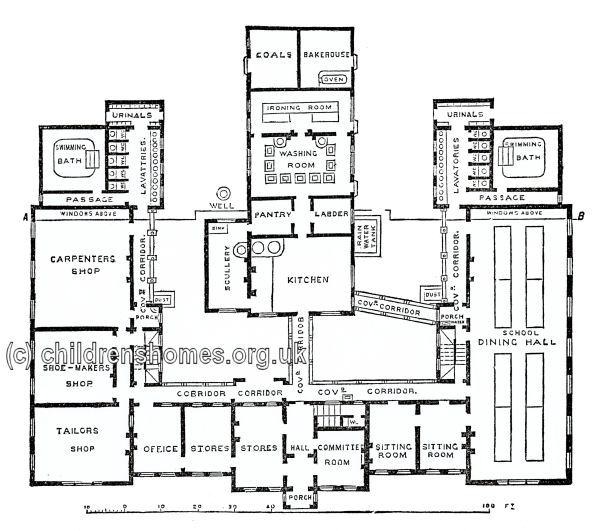
Bisley Farm School for Boys ground-floor plan0. © Peter Higginbotham
While the initial building work was being carried out, boys from the Society's London Refuge came in groups of 25 to spend a week's holiday at Bisley, camping in the farm's barns. When it came fully into operation, Bisley could accommodate 150 boys, generally aged from 10 to 12 at their time of admission, who had been homeless and destitute, and not convicted of any crime.
The boys were taught farming skills, carpentry, tailoring, and bread-making. Some also learned telegraphy, a skill then becoming much in demand in the commercial world. The School also had its own uniformed wind band.
In 1873, the accommodation at Bisley was increased by the construction of a similarly sized second establishment in the grounds of the Farm School, which was named the Shaftesbury School.
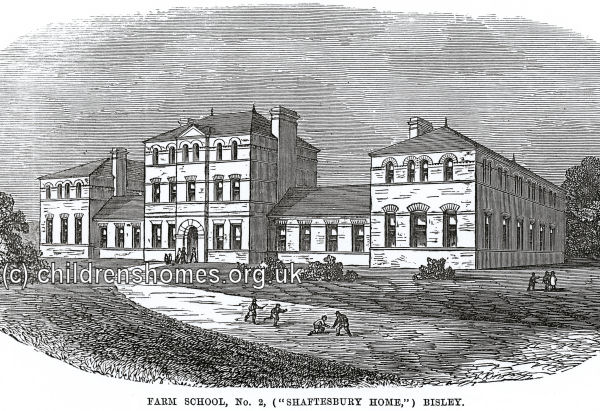
Shaftesbury School. © Peter Higginbotham
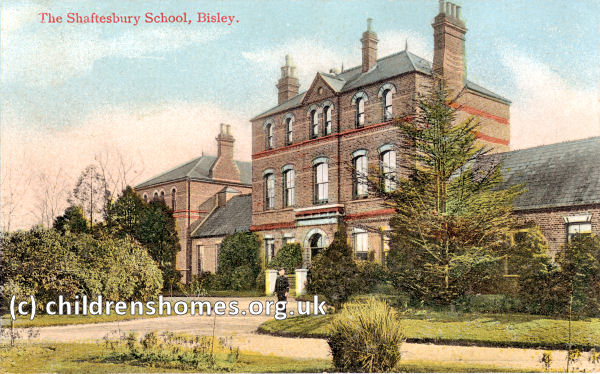
Shaftesbury School, c.1907. © Peter Higginbotham
The location of the two establishments is shown on the 1897 map below.
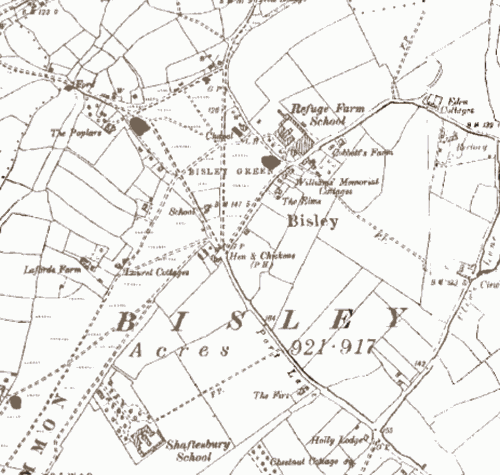
Bisley School sites, c.1897.
The number of boys at the two School soon proved too large for the small local church and a new chapel for the joint use of the two Schools was constructed in 1874, just to the north-west of the Farm School. Its entrance gates were made by the boys themselves.
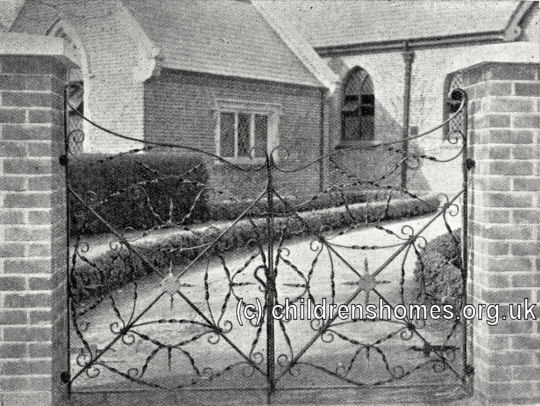
Bisley Schools chapel, date unknown. © Peter Higginbotham
In 1883, three cottages were built to act as a hospital for the boys. The layout of the building proved inconvenient and in 1896, the Bungalow Hospital was erected on Port Lane, midway between the two Schools. It had six beds (later increased to twelve), a day room, doctor's room, medical stores, and accommodation for the resident nurse-matron. The old hospital cottages were then converted to staff accommodation.
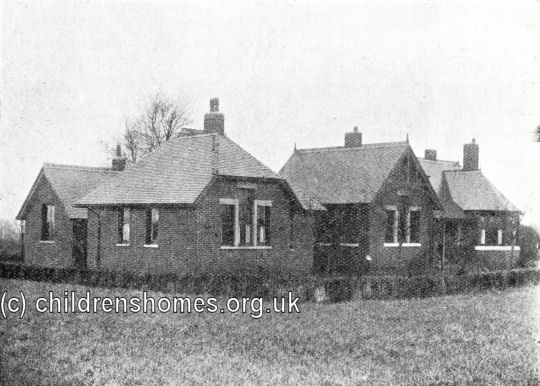
Bisley Schools Bungalow Hospital, date unknown. © Peter Higginbotham
To commemorate the life of Society's founder, William Williams, who died in 1892, the Williams Memorial Cottages were erected the following year at the south of the Farm School. The four cottages were used as staff residences.
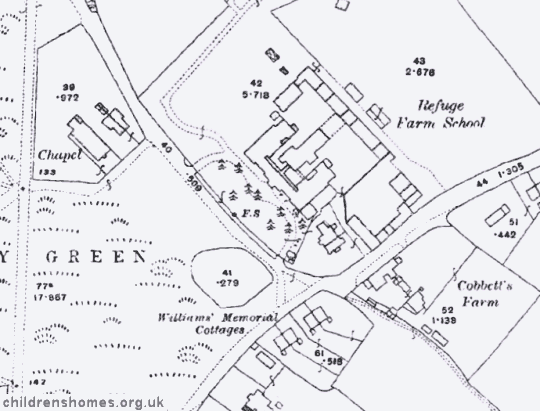
Bisley Farm School site, c.1913.
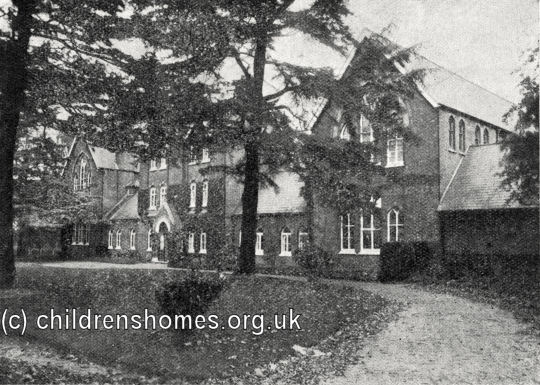
Bisley Farm School from the south, date unknown. © Peter Higginbotham
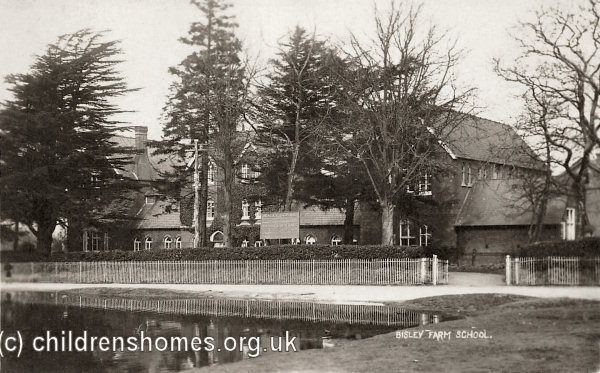
Bisley Farm School from the south, date unknown. © Peter Higginbotham
In 1893, the Shaftesbury School was closed because of a shortage of funds needed to carry out urgent repairs and extensions to other of the Society's property. It was re-opened in October, 1895. with 100 boys being transferred from the London Home to Bisley.
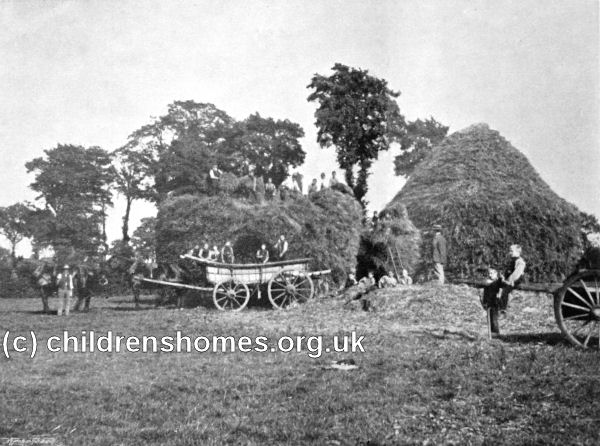
Bisley Farm School haymaking, 1890s. © Peter Higginbotham
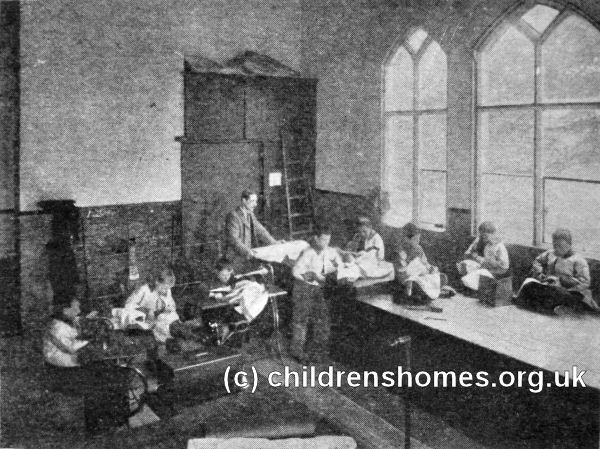
Bisley Farm School tailors' shop, 1890s. © Peter Higginbotham
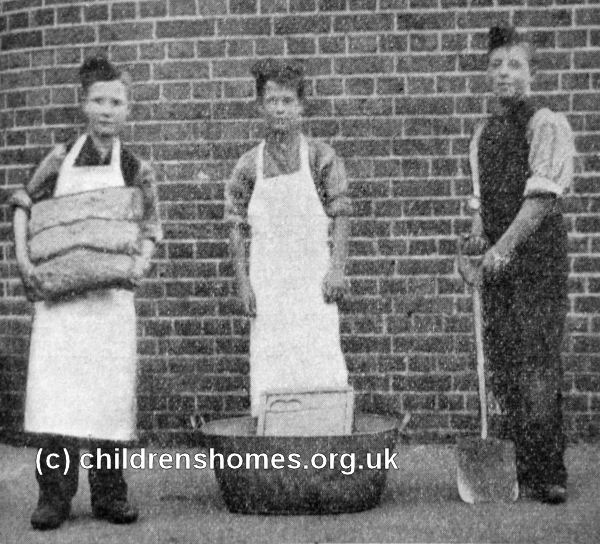
Bisley Farm School workers from bakery, laundry and garden, 1890s. © Peter Higginbotham
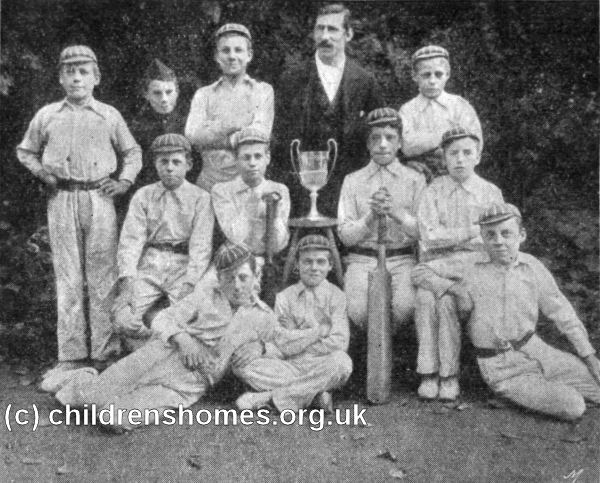
Bisley Farm School cricket team, 1901. © Peter Higginbotham
The passing of the 1918 Education Act resulted in the merger of the two Bisley Schools being merged in 1919. The Farm School became the School House, where all the teaching, both educational and technical, took place and where 100 of the younger (9 to 11 year old) boys resided. The former Shaftesbury School site became the Seniors' or Shaftesbury House and accommodated the 200 older boys. On April 1st, 1921, running of the educational facilities (i.e. the schoolrooms and workshops for manual training) was taken over by the Surrey Education Committee who thereafter paid the teachers' salaries and the cost of school books, stationery etc. All other aspects of the Schools' operation remained with the Society. In 1930, the School was upgraded from 'Elementary School' to 'Central School' which resulted in it being given more resources and developing a broader and more up-to-date curriculum which included commercial subjects, sciences, and handicrafts such as leatherwork, woodwork, metal work, shoemaking and tailoring. All the boys' clothing and boots were made on the School premises.
Following the 1944 Education Act, Bisley became a secondary school for boys aged 11 and over, while the Society's School at Twickenham, Fortescue House, was converted to a primary school for those aged 7 to 11.
The whole of the Bisley establishment was finally closed in 1958 and the boys then in residence were transferred to the Fortescue House.
The original Farm School buildings no longer survive and the site is now covered by modern housing. The Shaftesbury School site was occupied by Bisley Prison, now known as HM Prison Coldingley, with the old school buildings having been demolished.
Records
Note: many repositories impose a closure period of up to 100 years for records identifying individuals. Before travelling a long distance, always check that the records you want to consult will be available.
- The London Metropolitan Archives, 40 Northampton Road, London, EC1R 0HB now holds the archives of the Shaftesbury Homes and Arethusa Training Ship. More details in their online catalogue entry.
Census
Bibliography
- Bailey, Marion Chance of a Lifetime - the Story of the Shaftesbury Homes and Arethusa (1996, Dianthus Publishing)
- Cuthbert, V Where Dreams Come True: A Record of 95 Years (1937, London: Shaftesbury Homes and "Arethusa" Training Ship)
- Higginbotham, Peter Children's Homes: A History of Institutional Care for Britain's Young (2017, Pen & Sword)
- Hodder, Edwin The Life and Work of the Seventh Earl of Shaftesbury, K.G. (1886, Cassell)
Links
Except where indicated, this page () © Peter Higginbotham. Contents may not be reproduced without permission.


